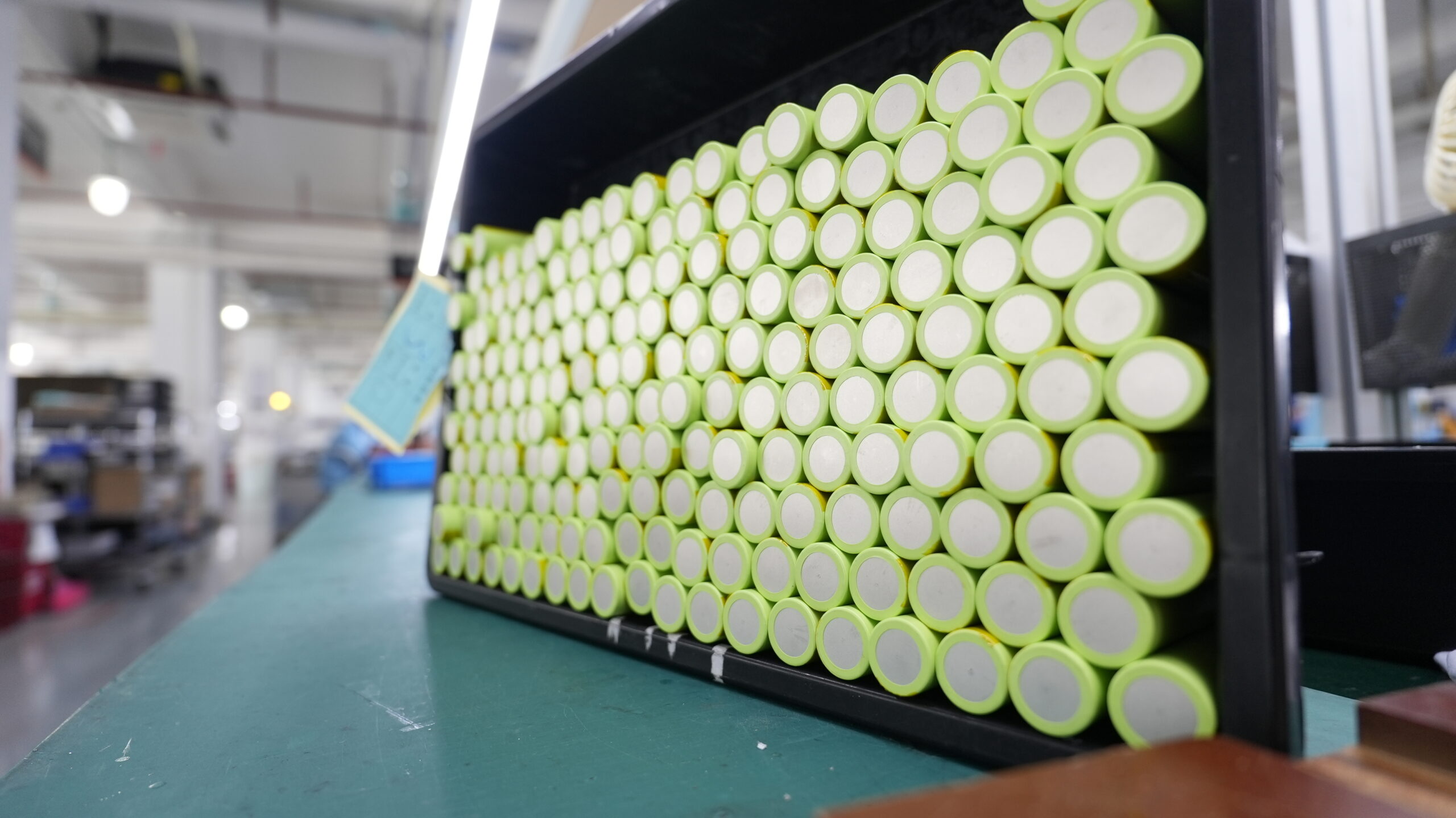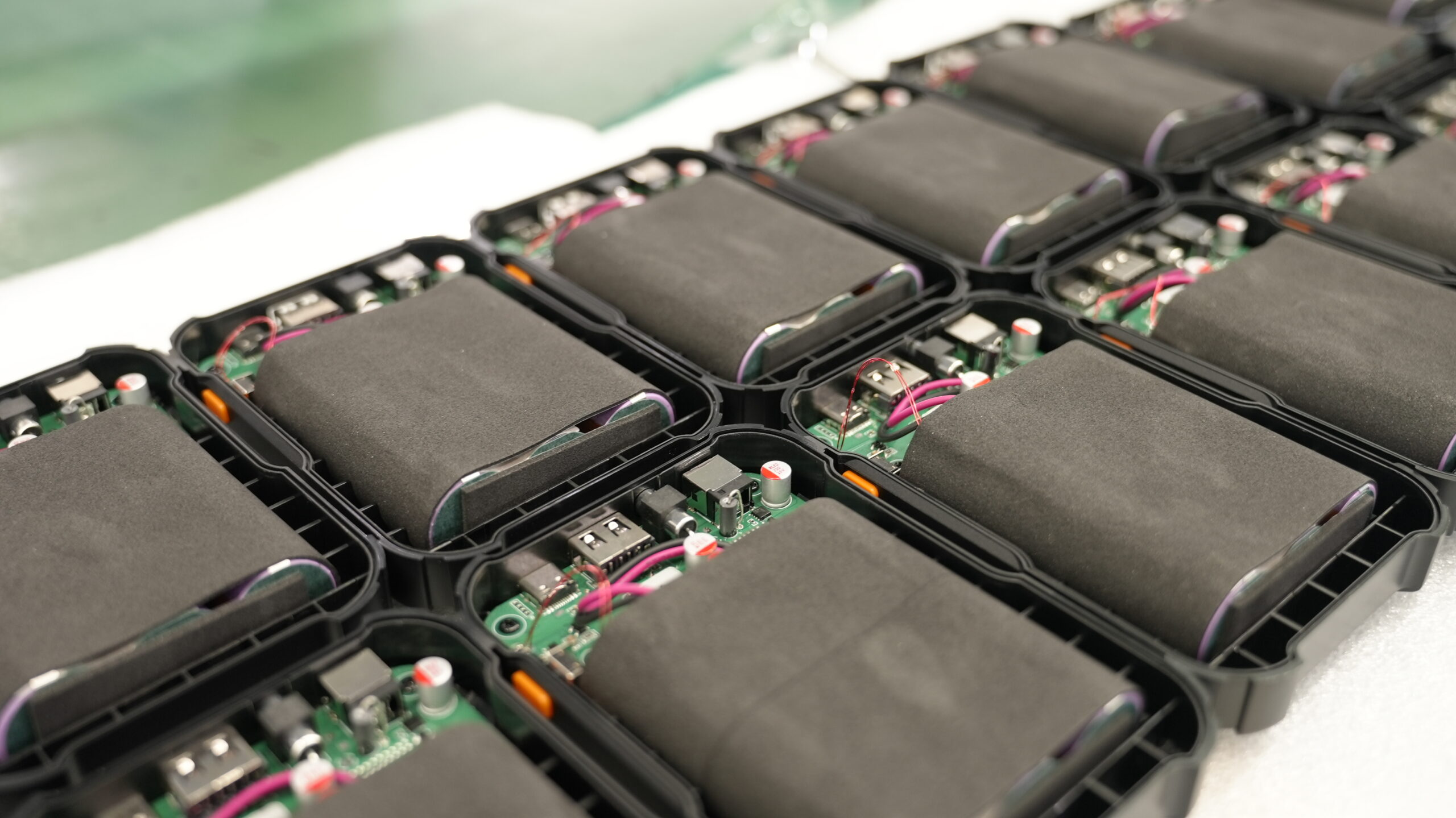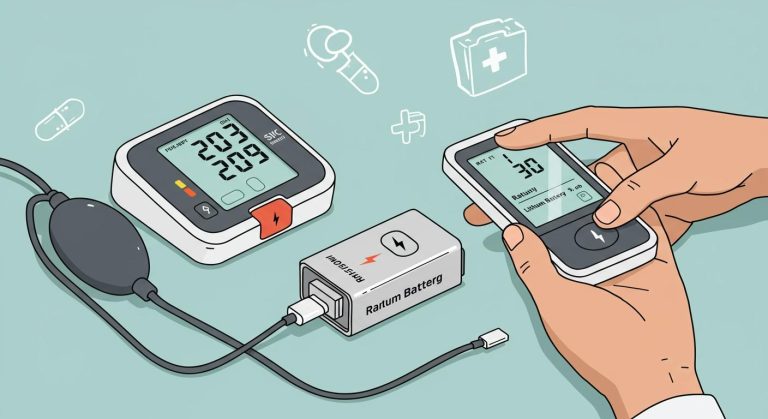
You face real challenges when selecting batteries for high-performance applications. Lithium-ion battery weight and energy density directly shape device performance, from laptops to electric vehicles. With energy densities reaching up to 250 Wh/kg, you achieve longer runtimes and lighter designs, critical for portability and range. The global lithium-ion battery market reached USD 54.4 billion in 2023, with consumer electronics leading demand.
Aspect | Statistic / Insight |
|---|---|
Global Market Size (2023) | USD 54.4 billion |
Consumer Electronics Share | Over 31% revenue share (includes laptops, portable devices) |
Automotive Segment Growth | Fastest-growing segment driven by EV adoption |
You must weigh battery technology choices carefully to meet your product’s performance goals in today’s competitive landscape.
Key Takeaways
Higher energy density in lithium-ion batteries means lighter, longer-lasting devices, improving portability and performance in laptops, electric vehicles, and industrial equipment.
Choosing the right battery chemistry, like NMC for lightness or LiFePO4 for safety and longevity, is key to meeting your device’s specific needs and balancing weight, energy, and cycle life.
Battery pack design, including packaging and management systems, affects total weight and safety, so optimize materials and layout to improve energy density without compromising reliability.
Accurate calculation of energy density helps select the best battery for your application, ensuring the right balance of weight, capacity, and performance.
Stay informed about emerging technologies like solid-state batteries and silicon anodes, which promise higher energy density and better safety for future device designs.
Part 1: Lithium-Ion Battery Weight and Energy Density

1.1 Impact on Device Performance
You need to understand how lithium-ion battery weight and energy density shape device performance in real-world applications. In B2B environments, these factors directly influence the efficiency, speed, and runtime of your products. Higher energy density means you can store more energy per unit weight, which leads to longer runtimes and improved device efficiency. For example, in laptops, a high energy density laptop battery allows for extended use between charges, supporting productivity in business, education, and field operations.
In electric vehicles, battery weight and energy density determine how far a vehicle can travel on a single charge and how quickly it can accelerate. A lighter battery pack with high energy density improves acceleration and extends driving range, which is critical for transportation fleets and logistics companies. The same principles apply to robotics, medical devices, and industrial automation, where battery performance metrics such as specific energy (Wh/kg), power density (W/kg), and charge/discharge efficiency must be balanced for optimal results.
Note: Battery pack design affects effective energy and power densities. Pack-level systems are heavier and less energy-dense than individual cells, so you must consider the entire system when evaluating battery performance.
Different lithium battery chemistries offer unique trade-offs for your applications:
Chemistry | Gravimetric Energy Density (Wh/kg) | Cycle Life (cycles) | Typical Use Cases |
|---|---|---|---|
NMC | 150–220 | 1,000–2,000 | Electric vehicles, portable power, industrial robots |
LCO | 150–200 | 500–1,000 | Laptops, medical devices, security systems |
LiFePO4 | 90–160 | 2,000–5,000 | Infrastructure, stationary storage, industrial backup |
LMO | 100–150 | 300–700 | Power tools, portable power, medical equipment |
LTO | 70–80 | 7,000–20,000 | Grid storage, rapid-charge industrial vehicles |
You must select the right chemistry based on your performance requirements. For instance, NMC batteries deliver high energy density and low weight, making them ideal for electric vehicles and portable power systems. LCO batteries, with their high energy density and compactness, are preferred for laptops and medical devices where efficiency and portability matter most. LiFePO4 batteries, though heavier, offer superior safety and long lifespan, which is valuable for infrastructure and stationary applications.
Battery performance also depends on power density and charge/discharge efficiency. High power density supports rapid energy delivery, which is essential for robotics and emergency medical equipment. Efficient charge/discharge cycles reduce energy loss, improving overall device performance and reliability.
1.2 Portability and Range
Lithium-ion battery weight and energy density play a central role in determining the portability and range of your devices. In sectors like transportation, security, and industrial automation, reducing battery weight while maximizing energy density leads to lighter, more portable products with longer operational times.
For electric vehicles, every 10% increase in gravimetric energy density can boost driving range by about 15%. Modern lithium battery packs now reach 250–300 Wh/kg, enabling electric vehicles to travel over 300 miles per charge. This advancement reduces range anxiety and increases the practicality of electric fleets for logistics and public transportation.
In portable power applications such as laptops, medical monitors, and security cameras, high energy density batteries allow you to design lighter, more compact devices. This improves user experience and makes deployment easier in field operations or remote locations. For example, a high energy density laptop battery extends runtime, supporting professionals who need reliable performance during travel or long shifts.
You see these benefits in robotics, where lighter battery packs enable longer missions and greater mobility. In medical and security systems, portable power solutions with high energy density ensure continuous operation, even in critical scenarios.
Advances in cathode and anode materials, such as high-nickel NMC and silicon anodes, promise even higher energy density in the future. These innovations will further enhance the portability and range of your devices, opening new possibilities for practical applications across industries.
Tip: When selecting a lithium battery pack for your B2B project, always balance energy density, weight, safety, and cycle life to match your operational needs.
Part 2: Key Factors Affecting Battery Weight
2.1 Chemistry and Design
You influence lithium battery weight and energy density most by choosing the right chemistry and design. Different chemistries, such as LiFePO4 and NMC, offer unique trade-offs. NMC batteries provide higher energy density and lower weight per kilowatt-hour, making them ideal for applications where every kilogram matters. LiFePO4 batteries, while heavier, deliver greater stability and longer cycle life. The table below compares these chemistries:
Chemistry Type | Energy Density (Wh/kg) | Weight per kWh (kg) | Impact on Weight and Energy Density |
|---|---|---|---|
LiFePO4 | 100–160 | Higher | Heavier, lower energy density, but stable and long-lasting |
NMC | Up to 265 | Lower | Lighter, higher energy density, ideal for portable and automotive uses |
You also shape battery performance through design choices. Using high-nickel cathodes or silicon-based anodes increases energy density. Optimizing electrode arrangement and separator thickness improves packing density, which lets you store more energy without increasing weight. Selecting the right electrolyte and maximizing active material further enhances energy density.
Tip: Always consider how your design choices affect both battery safety and weight. High energy density often requires careful management of heat and internal resistance.
2.2 Capacity and Size
You must balance capacity, size, and weight to meet your device’s needs. Higher capacity means more active material, which increases both size and weight. However, advances in lithium battery materials and cell design let you achieve higher capacity without a proportional increase in weight. The following table shows how battery capacity and voltage relate to weight:
Battery Capacity (Ah) | Voltage (V) | Approximate Weight (kg) |
|---|---|---|
10 | 12 | 1.0 to 1.6 |
20 | 12 | 2.0 to 2.5 |
50 | 12 | 5.0 to 6.8 |
100 | 12 | 11.3 to 13.6 |
200 | 12 | 20.4 to 27.2 |
100 | 24 | 18.0 to 22.0 |
100 | 48 | 38.0 to 50.0 |
You can estimate the required battery capacity by calculating your device’s power consumption and desired runtime. Manufacturers often optimize lithium battery packs by selecting the smallest size that meets capacity needs, while keeping weight manageable for portability and performance.
2.3 Packaging and Components
You must account for packaging and internal components when evaluating total battery weight. Internal systems like the battery management system (BMS), thermal management, and additional electronics add mass but are essential for safety and performance. Packaging materials, such as metal cans for cylindrical cells or aluminum-plastic films for pouch cells, also impact weight. Pouch cells use lighter materials, reducing overall battery pack weight compared to metal enclosures.
Internal components: BMS, thermal management, cell balancing circuits, and communication modules all contribute to total weight.
Packaging: Thinner current collectors and optimized materials improve energy density by reducing inactive mass.
System-level design: Larger cells improve packaging efficiency but may introduce heat management challenges.
Note: Packaging optimization has driven much of the recent progress in lithium battery energy density, but future gains will likely depend on new chemistries and advanced materials.
Part 3: Estimating Weight and Energy Density
3.1 Calculation Methods
You can estimate lithium-ion battery weight and energy density using standard formulas. For gravimetric energy density, use:
Energy Density (Wh/kg) = (Nominal Voltage × Rated Capacity) / Battery Weight
To calculate volumetric energy density, use:
Energy Density (Wh/L) = (Capacity × Discharge Voltage) / Volume
Follow these steps for practical estimation:
Find the rated capacity (Ah) from the battery datasheet.
Identify the average operating voltage (V) from the discharge curve.
Measure the total battery mass (kg), including all components.
Apply the formula:
Energy Density (Wh/kg) = (Capacity × Voltage) / Mass
For example, if you have a battery with 2.6 Ah capacity, 3.7 V average voltage, and 0.5 kg mass, the energy density is (2.6 × 3.7) / 0.5 = 19.24 Wh/kg. Always include the weight of packaging and non-active materials, as these affect the total density.
In real-world applications, such as laptops and electric vehicles, you use these calculations to optimize battery pack design. Advanced testing protocols, like Hybrid Pulse Power Characterization (HPPC), provide current and voltage data for accurate State of Charge (SOC) estimation. Integrating these methods with a Battery Management System (BMS) ensures you monitor energy density and battery health in dynamic conditions.
Tip: Accurate energy density calculations help you select the right battery for your device, balancing weight, performance, and safety.
3.2 Reference Values
You need reliable reference values to compare lithium-ion chemistries for your projects. The table below summarizes platform voltage, energy density, and cycle life for common lithium-ion battery types:
Chemistry | Platform Voltage (V) | Energy Density (Wh/kg) | Cycle Life (cycles) | Typical Applications |
|---|---|---|---|---|
LCO | 3.7 | 150–200 | 500–1,000 | Laptops, medical devices |
NMC | 3.6–3.7 | 150–220 | 1,000–2,000 | Electric vehicles, energy storage |
LiFePO4 | 3.2 | 90–160 | 2,000–5,000 | Energy storage, backup systems |
LMO | 3.7–4.2 | 100–150 | 300–700 | Power tools, portable equipment |
LTO | 2.4 | 50–80 | 7,000–20,000 | Grid storage, rapid-charge systems |
Solid-state | 3.7–4.2 | 250–350 | 1,000–2,000 | Next-gen EVs, advanced electronics |
Lithium metal | 3.7–4.2 | 350–500 | 500–1,000 | Research, high-energy storage |
For practical context, consider these typical weights:
Application / Battery Type | Weight (kg) or Weight per kWh (kg/kWh) |
|---|---|
Lithium-ion battery (per kWh) | 6–8 kg/kWh |
Tesla Model S 85 kWh pack | ~540 kg (6.35 kg/kWh) |
Nissan Leaf 40 kWh pack | ~303 kg (7.6 kg/kWh) |
10,000mAh portable battery | 0.2–0.23 kg |
AA lithium-ion cell | ~0.02 kg |
You see that NMC and LCO chemistries deliver high energy density, making them ideal for laptops and electric vehicles. LiFePO4 offers lower density but excels in safety and cycle life, which is critical for energy storage and backup systems. Solid-state and lithium metal batteries promise even higher energy density for future applications.
Part 4: Comparisons with Other Technologies
4.1 Other Battery Types
You need to understand how lithium-ion batteries compare to other battery technologies when designing electric devices or vehicles. Lithium-ion batteries stand out for their high energy density and lightweight construction. This makes them the preferred choice for applications where size and weight matter most, such as portable electronics and electric vehicles.
The table below highlights key performance comparisons among common battery types:
Battery Type | Energy Density (Wh/kg) | Weight Comparison | Typical Applications |
|---|---|---|---|
Lithium-ion | 150–200 | Lighter and more compact for same energy | Laptops, electric vehicles, medical devices |
Nickel-metal hydride | 60–120 | Heavier and bulkier than lithium-ion | Hybrid vehicles, power tools |
Lead-acid | <60 | Heaviest, lowest energy density | Backup power, industrial equipment |
Solid-state | 300+ (potential) | Potentially lightest, still emerging | Next-gen EVs, advanced electronics |
You see that lithium-ion batteries deliver much higher energy density than nickel-metal hydride or lead-acid batteries. This means you can achieve the same energy storage with less weight and volume. Solid-state batteries promise even greater energy density, but you face manufacturing and cost challenges before they become mainstream.
Lithium-ion batteries offer high cycle life and low self-discharge.
They outperform nickel-cadmium and nickel-metal hydride batteries in energy density and weight.
Their lightweight nature supports mobile and automotive applications where every gram counts.
Note: While lithium-ion batteries lead in most performance comparisons, you must still consider safety, cost, and recycling when selecting battery technology for your projects.
4.2 Fuels and Energy Sources
You also need to compare lithium-ion batteries with alternative fuels and energy sources, especially for transportation and large-scale applications. Hydrogen fuel cells and conventional fuels like gasoline offer different advantages and limitations.
Feature | Hydrogen Fuel Cells | Lithium-ion Batteries |
|---|---|---|
Energy Density | Higher by weight, suitable for long-range | High per volume, compact for devices |
Weight | Lower for same energy, ideal for transport | Higher by mass, limits range in vehicles |
Refueling/Charging | Fast refueling in minutes | Charging takes 1–3 hours |
Byproducts | Water vapor and heat (clean) | Heat during discharge |
Applications | Long-distance, weight-sensitive transport | Electric vehicles, portable electronics |
Hydrogen fuel cells provide greater energy storage density and lower weight than lithium-ion batteries. This makes them attractive for long-range and weight-sensitive vehicles. However, hydrogen systems lose more energy during conversion and face storage challenges. Lithium-ion batteries remain compact and efficient, supporting electric vehicles and portable devices, but their lower energy density by mass limits range.
Tip: When you evaluate battery technology for electric vehicles or portable power, always weigh energy density, weight, refueling time, and safety. Each technology brings unique trade-offs that impact your device’s performance and practicality.
Part 5: Battery Composition Breakdown

5.1 Cell Components
You need to understand the main components inside a lithium battery cell to optimize weight, energy density, and safety. Each part plays a specific role in performance and charging efficiency:
Casing: The outer shell protects internal materials and ensures safety. Traditional nickel-coated steel casings account for over a quarter of cell mass but do not store energy. Switching to lightweight aluminum casings can reduce casing mass by 63%, increasing energy density by more than 25%.
Electrodes: The cathode (often NMC, LCO, LiFePO4, LMO, or LTO) and anode (usually graphite) store and release energy during charging and discharging. The amount and density of active materials in these electrodes directly impact both cell weight and energy density.
Separator: This thin layer keeps the electrodes apart, preventing short circuits and improving safety features.
Electrolyte: The liquid or gel medium allows ions to move between electrodes during charging. It contributes to weight and affects charging speed and safety.
Current Collectors: Thin metal foils (aluminum for cathode, copper for anode) collect and transfer electrons. They add mass but are essential for efficient charging.
Note: Battery chemistry and design choices, such as using NMC for higher energy density or LiFePO4 for stability, influence both weight and safety. Application requirements, like those for electric vehicles or portable electronics, dictate the optimal balance of these components.
Parameter Category | Key Factors Affecting Weight and Energy Density | Impact on Battery Performance |
|---|---|---|
Thermodynamic Factors | Amount and loading density of active materials | Strongly correlates with cell mass and capacity at low rates |
Kinetic Factors | Porosity, tortuosity, conductivities, diffusivities | Affect rate capability and effective energy density at high rates |
5.2 Pack Components
You must consider the full battery pack structure to evaluate total weight, energy density, and safety features. A typical lithium battery pack includes:
Battery Cells: Multiple cells arranged to meet voltage and capacity needs.
Battery Management System (BMS): Monitors charging, balances cells, and provides critical safety features.
Cooling Systems: Regulate temperature to prevent overheating and ensure safety during charging and discharging. These systems add weight but are essential for high-performance applications.
Casing and Structural Materials: Protect cells and electronics. Manufacturers use lightweight materials like aluminum-magnesium alloys and composites to reduce mass while maintaining safety.
Wiring Harnesses and Connectors: Enable power delivery and communication between cells and the BMS.
The cathode makes up about 20-25% of total pack weight, while the anode contributes 5-10%. Electrolyte and separator account for 10-15% and 3-5%, respectively. The casing and structural materials also add significant weight. Efficient packaging, such as Cell To Pack (CTP) designs, reduces unused space and improves weight efficiency. Advanced designs, including structural batteries that use carbon fiber composites, can cut pack weight by up to 20% and increase driving range or device runtime.
Tip: You should always balance energy density, safety, and charging performance when designing or selecting a lithium battery pack for your application.
Part 6: Practical Takeaways
6.1 Advantages
You gain several key advantages when you choose lithium-ion batteries for modern device applications:
You benefit from higher energy density than traditional batteries, which means you can store more energy in a smaller, lighter package.
You achieve longer device run times and less frequent charging, supporting greater productivity and convenience.
The lightweight and compact design enables you to create portable power solutions for a wide range of applications, from electric vehicles to industrial automation.
Lithium-ion batteries maintain consistent performance with minimal self-discharge, which improves reliability for standby or occasional use.
The superior energy-to-weight ratio makes these batteries ideal for applications where space and weight are critical, such as robotics and portable electronics.
Manufacturers leverage these strengths to deliver exceptional energy efficiency, long battery life, and low maintenance. You see improved device reliability, reduced operational costs, and enhanced sustainability through lower emissions and renewable energy integration.
6.2 Limitations
You must also consider the limitations of lithium-ion battery technology:
The liquid electrolyte inside the battery is volatile and unstable when exposed to oxygen, creating significant safety risks.
Safety concerns restrict how compact and lightweight you can make the battery, limiting further improvements in energy density.
Higher energy density increases the risk of combustion, which imposes practical limits on battery design.
Lithium-ion batteries depend on critical raw materials, raising environmental and supply chain concerns.
You face challenges with recyclability, short battery life, and degradation after repeated charging cycles.
Charging times remain long, and rapid charging can reduce longevity and reliability.
These factors limit the adoption of lithium-ion batteries in some emerging applications, especially where safety, sustainability, and high performance are required.
6.3 Application Decisions
You must weigh several factors when selecting lithium-ion batteries for your applications. The table below summarizes key considerations:
Factor | Description |
|---|---|
Battery Chemistry | LiFePO4 batteries are heavier with lower energy density than NMC for the same capacity. |
Application Requirements | EVs need high capacity and heavier packs; portable power solutions require lightness and compactness. |
Trade-offs | Higher energy density means lighter weight, but chemistry choice affects performance and safety. |
Impact on Performance | Battery weight influences device performance, shipping, and handling. |
Battery Management | Advanced BMS and PCM systems improve safety, reliability, and longevity. |
You should match battery chemistry and design to your specific application needs. For stationary storage or entry-level EVs, LiFePO4 offers higher safety and longevity. For portable power and high-performance applications, NMC provides better energy density and lighter weight. Packaging innovations and improved manufacturing methods continue to narrow the gap between different chemistries, giving you more flexibility in your choices.
Tip: Always balance energy, safety, charging, and reliability to achieve the best results for your application.
You gain significant advantages from lithium-ion battery weight and energy density in modern applications. These features let you design lighter, more efficient battery packs for a wide range of applications. You must always match battery chemistry and design to your specific applications, balancing energy, safety, and cost. Understanding battery composition helps you optimize performance for demanding applications. Looking to the future, you will see major trends shaping applications:
Solid-state batteries will improve safety and energy density for next-generation applications.
Silicon anodes will boost storage capacity, supporting high-power applications in the future.
Higher nickel cathodes will enable more compact, powerful battery packs for future applications.
Larger cells will extend runtime and power output, critical for future industrial applications.
Recycling technologies will support sustainability and the circular economy in future applications.
You should stay informed about these trends to make the best choices for your applications and prepare for the future of battery technology.
FAQ
What is the main advantage of high energy density in lithium-ion batteries for B2B devices?
High energy density lets you design lighter, more compact devices. You can increase runtime or reduce overall system weight. This advantage is critical for electric vehicles, robotics, and portable industrial equipment.
How do LiFePO4 and NMC batteries compare for industrial applications?
Chemistry | Energy Density (Wh/kg) | Cycle Life (cycles) | Typical Use |
|---|---|---|---|
LiFePO4 | 90–160 | 2,000–5,000 | Stationary storage |
NMC | 150–220 | 1,000–2,000 | Electric vehicles |
You should choose LiFePO4 for longevity and safety. NMC offers higher energy density for weight-sensitive applications.
How do you estimate the weight of a lithium-ion battery pack?
You calculate pack weight by dividing total energy (Wh) by energy density (Wh/kg). For example, a 10 kWh NMC pack (200 Wh/kg) weighs about 50 kg. Always include the weight of packaging and management systems.
What factors most affect lithium-ion battery pack weight?
You influence pack weight through chemistry choice, cell design, and packaging. NMC cells reduce weight for the same capacity. Efficient pack layouts and lightweight materials further lower total mass.
Why does battery management matter for B2B lithium-ion packs?
A robust Battery Management System (BMS) protects your investment. It monitors cell health, balances charge, and prevents overheating. This ensures safety, extends cycle life, and maintains reliable performance in demanding industrial environments.






